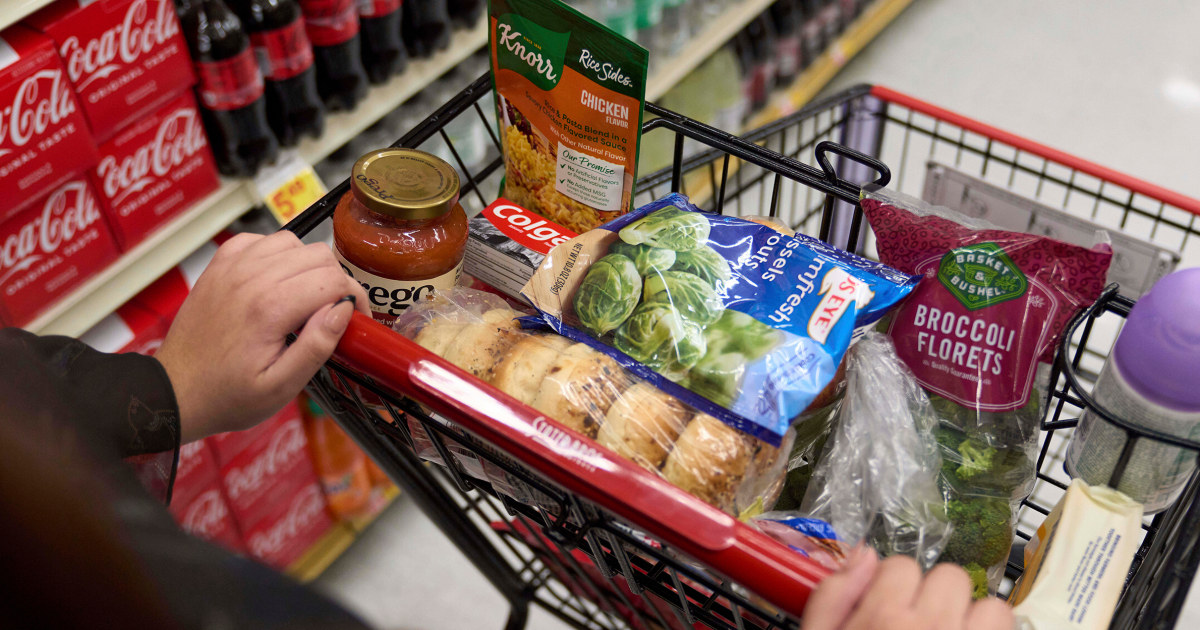Are Rising Grocery Costs Causing Stress for Most U.S. Adults?

Understanding the Rising Stress of Grocery Costs in America
In recent years, grocery prices have experienced a significant surge, leaving many U.S. adults feeling stressed about their food budgets. A new poll reveals that a vast majority of the population is concerned about the increasing cost of groceries, which is compounded by factors such as inflation and the impact of tariffs on imported goods. This article delves into the underlying causes of rising grocery prices, the emotional and financial ramifications for consumers, and strategies for managing grocery expenses effectively.
The Current State of Grocery Prices
The cost of groceries has risen dramatically over the past few years, with prices for various staples, including meat, dairy, and vegetables, seeing notable increases. Factors contributing to this trend include:
- Inflation: The overall inflation rate in the U.S. has surged, with food prices reflecting this trend. Consumers are feeling the pinch as their grocery bills rise faster than their incomes.
- Supply Chain Issues: Disruptions caused by the COVID-19 pandemic have led to significant supply chain challenges. These include shortages of labor and transportation delays, which in turn escalate costs.
- Tariffs: Trade policies, including tariffs on imported goods, have increased prices for many food products. This has led consumers to pay more for everyday items.
Emotional Impact of Rising Grocery Costs
As grocery prices increase, so does the emotional stress for many American households. The psychological impact of financial strain can lead to various negative outcomes, including:
- Anxiety: The constant worry about affording basic necessities can lead to heightened anxiety levels, affecting overall well-being.
- Family Tensions: Financial stress can lead to conflicts within families over budgeting and spending priorities.
- Health Consequences: Stress can also impact physical health, leading to issues such as sleep disturbances and weakened immune systems.
Understanding Consumer Behavior
Consumers are increasingly adjusting their shopping habits in response to rising grocery prices. Here are some trends observed in consumer behavior:
- Brand Switching: Many shoppers are opting for generic or store-brand products instead of name brands to save money.
- Bulk Buying: Purchasing in bulk is becoming more common as consumers look to stock up on non-perishable items to avoid frequent price hikes.
- Meal Planning: More households are adopting meal-planning strategies to minimize waste and maximize their grocery budgets.
Strategies for Managing Grocery Expenses
While rising grocery costs can be daunting, there are several strategies consumers can employ to manage their expenses effectively:
1. Create a Budget
Establishing a grocery budget is a fundamental step in managing food costs. By tracking spending and setting limits, consumers can gain better control over their finances.
2. Use Coupons and Discounts
Taking advantage of coupons, loyalty programs, and seasonal sales can lead to significant savings. Shoppers can also use apps that aggregate deals from various stores.
3. Opt for Seasonal Produce
Buying fruits and vegetables that are in season can reduce costs and provide fresher options. Seasonal produce is often cheaper and tastes better, enhancing meal quality.
4. Reduce Waste
Minimizing food waste is crucial for stretching grocery budgets. Consumers can plan meals around ingredients they already have and use leftovers creatively to avoid disposal.
5. Consider Alternative Shopping Locations
Exploring different grocery stores, farmers' markets, and discount retailers can yield better prices. Many consumers find that shopping at discount chains or local markets can significantly reduce their overall grocery bills.
Exploring Future Trends in Grocery Pricing
As we look ahead, several factors may influence the future of grocery pricing in the U.S. Understanding these trends can help consumers prepare for potential changes:
- Technology Integration: The rise of online grocery shopping and delivery services may alter how prices are set and how consumers shop.
- Health and Wellness Focus: An increasing demand for organic and health-conscious products may impact pricing structures. As consumers prioritize health, prices for these items may rise.
- Sustainability Practices: As environmental concerns grow, practices that emphasize sustainability may affect food production costs, ultimately influencing pricing.
Conclusion
The rising cost of groceries is a pressing issue that affects a majority of American adults. As financial stress mounts, it is essential for consumers to equip themselves with strategies to manage their grocery expenses effectively. By understanding the factors at play and adopting practical solutions, individuals can navigate these challenging times with greater confidence.
As prices continue to fluctuate, how will you adjust your grocery shopping habits to stay within your budget? The journey of adapting to these changes is ongoing, and each household must find what works best for them. #GroceryBudgeting #FoodPrices #ConsumerStress
FAQs
What are the main factors driving up grocery prices?
Key factors include inflation, supply chain issues, and tariffs on imported goods that have increased the cost of food products.
How can I save money on groceries?
Strategies include creating a budget, using coupons, buying seasonal produce, reducing waste, and exploring different shopping locations.
What emotional impact do high grocery costs have on consumers?
High grocery costs can lead to increased anxiety, family tensions, and potential health consequences due to financial stress.
Published: 2025-08-04 23:37:38 | Category: Trump GNEWS Search



